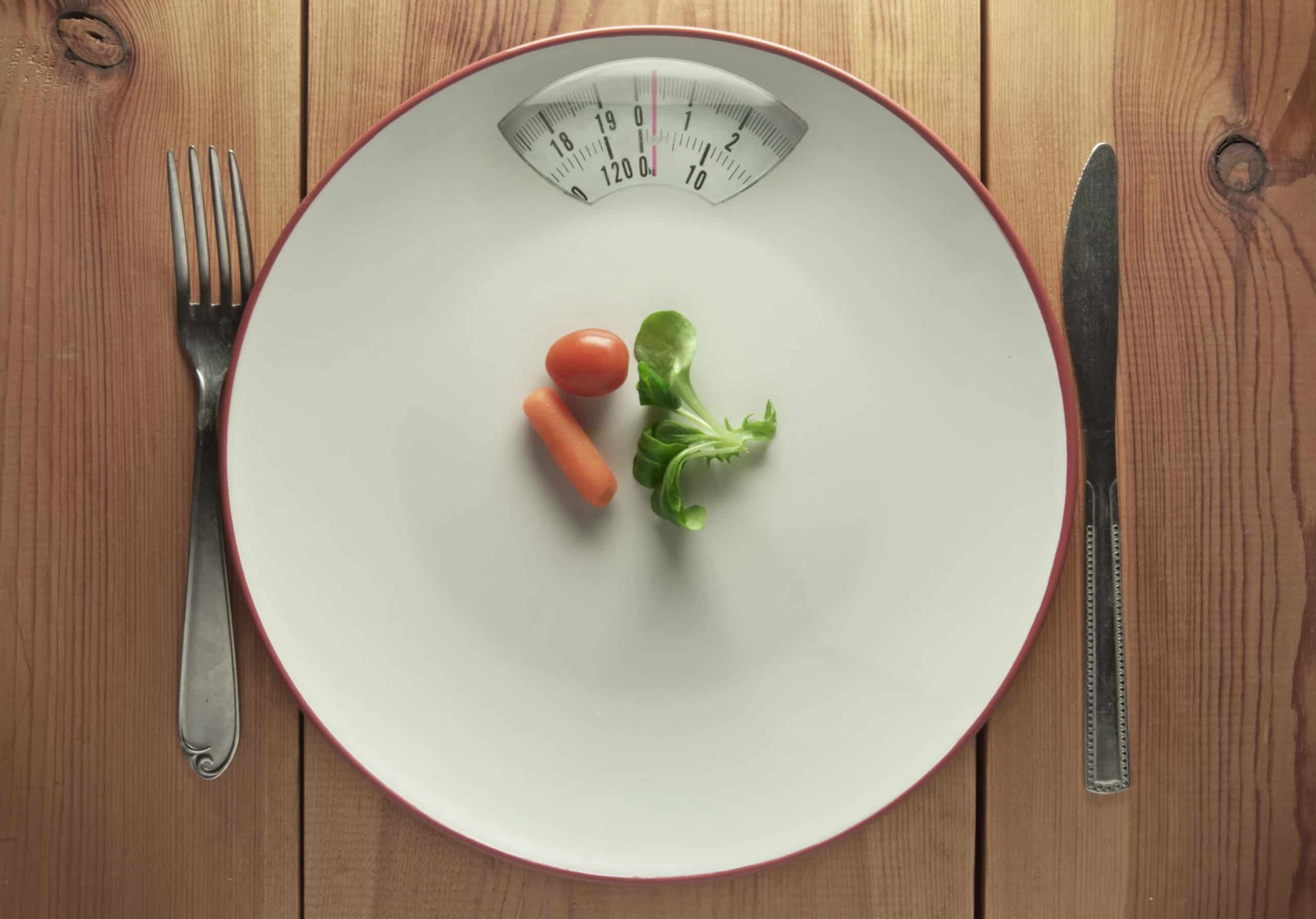What you’ll learn:
- Chronic stress can hinder weight loss by increasing cortisol levels, which promotes appetite and fat storage, especially around the belly.
- Somatic exercises, which emphasize mindful movement and the mind-body connection, can reduce stress, improve posture, and enhance body awareness.
- Use somatic exercises alongside Noom’s holistic approach to weight loss, combining mindful movement with personalized nutrition and stress management techniques.
Ever noticed how stress seems to make weight loss harder? There’s a scientific reason for that. When you’re stressed, your body produces more cortisol—a hormone that can increase appetite and promote fat storage, especially around your belly.
In one large study of healthy adults, increased cortisol levels from everyday stress triggered cravings for high-calorie foods. The people who reported higher stress also had elevated insulin levels and were more likely to gain weight. The study suggests that chronic stress, combined with these hormonal changes, can lead to increased food cravings and fat storage.
The good news? You might be able to reduce stress with somatic exercises.
Somatic exercises are a gentle, mindful way to move that focuses on the mind-body connection. They help reduce stress, which in turn may help manage cortisol levels and support your weight loss efforts alongside a reduced-calorie diet.
At Noom, we understand that weight loss is about more than just diet and exercise. It’s about cultivating a balanced lifestyle that addresses your physical, mental, and emotional well-being. That includes finding exercises that bring you joy, not just burn calories. If you love the feeling of moving your body combined with breath and relaxation, somatic exercises could be for you.
Curious about how somatic exercises can seamlessly integrate into your weight loss plan? We’re here to guide you.
What are somatic exercises?
Somatic exercises encompass a diverse range of mindful movement practices. Philosopher and movement theorist Thomas Hanna is credited with coining the term in the mid-20th century. The term “somatic” is derived from the Greek word “soma,” meaning “body.” In the context of somatic practices, it emphasizes an integrated understanding of the body that encompasses both physical sensations and psychological experiences.
Hanna’s work drew on various disciplines, including psychology, physiology, and the study of human movement. Somatic exercises aim to enhance physical health, emotional well-being, and overall mindfulness by fostering a deeper understanding of one’s body and its patterns.
Somatic exercises prioritize internal awareness and sensation. They encourage you to tune into your body’s cues, fostering a deeper understanding of how you move and feel. This differs from exercises focusing on physical exertion, like running or weight lifting.
Real results with a personalized weight loss program
Take the quiz!

Somatic exercises are all about tuning into how your body feels. The idea is to use slow, easy movements that help you get more in touch with your body. Doing this teaches your nervous system to release built-up tension and move more freely.
How do somatic exercises help with weight loss?
With their gentle and mindful movements, somatic exercises foster a deeper connection between your mind and body. This heightened awareness can reduce stress, empower you to make healthier food choices, and cultivate a more balanced lifestyle.
Here’s a breakdown of how they contribute:
- Reduced stress and cortisol levels: Somatic exercises can lower cortisol levels and may balance other hormones, potentially leading to weight loss.
- Improved posture and core strength: Many somatic exercises focus on aligning the spine and strengthening the core muscles. A strong core makes everyday movement easier and exercise less strenuous.
- Increased flexibility and range of motion: Somatic exercises emphasize gentle stretching, which can improve flexibility and range of motion.
- Enhanced mind-body connection: You might become more attuned to hunger and fullness cues. You’ll be equipped to make conscious food choices and avoid overeating, ultimately supporting your weight loss efforts.
- Pain reduction: Many individuals experience chronic pain that hinders their ability to exercise regularly. Somatic exercises can help alleviate pain and improve mobility, allowing you to engage in physical activity more comfortably and consistently.
Research shows that people who practice mindful movement, like somatic exercises, often see great benefits for their mental health. They report less stress, lower anxiety, and more positive emotions. These improvements can be really important for those working on weight management. The study points out that mindfulness-based practices can help with emotional regulation and mindful eating. It also suggests that feeling better mentally can make a big difference in sticking to those weight loss goals in the long run.
Popular somatic exercise practices
Let’s explore some simple somatic exercises you can try. These exercises can help you connect with your body and support your weight loss journey.
They stress body awareness, which helps build a strong mind-body connection through gentle, low-impact movements that lower the risk of injury and relieve stress.
- Yoga: At its heart, yoga is a form of somatic movement. Yoga encourages mindful moves and a greater awareness of the body. It’s especially good for lowering stress, relieving pain, and making it easier to move around. Explore different forms of yoga and check out Noom Move for some quick practices you can do any time.
- Mindful walking: This simple, everyday form of somatic movement focuses on noticing your body’s sensations as you walk. Paying attention to your posture, breathing, and how your feet connect with the ground can help improve balance, relieve tension, and bring a sense of calm.
- Gentle stretching: Stretching with mindful awareness of your body’s limits can be a somatic practice. Focusing on the sensations in your muscles and breathing through each stretch helps improve flexibility and reduce tension.
- Breathing exercises: Deep, mindful breathing is a somatic practice that increases awareness of the body. By paying attention to how your breath flows and affects different parts of your body, you can reduce stress and create a sense of relaxation. Noom’s Success kit can help you find a breathing exercise that works for you. Check out the “Create inner calm” section for guided practices and soothing meditations.
- Progressive muscle relaxation: This technique involves consciously tensing and then relaxing different muscle groups in the body. It helps you become more aware of where you carry tension and teaches you how to release it.
- Tai chi: Tai chi is a gentle form of movement that focuses on slow, flowing motions. By connecting breath with movement it encourages mindfulness, improves balance, and promotes relaxation.
- Alexander technique: This technique eases pain and tension by improving your posture, movement, and knowledge of your body. You will learn to become aware of harmful habits and adjust them to improve your health and reduce chronic pain.
- Feldenkrais method: This practice uses slow, gentle movements to improve body awareness, lessen pain, and make movement more efficient. It encourages examining present movement patterns to find better ones. The goal is to improve physical performance and overall health through better self-awareness and movement strategies.
- Body-Mind Centering (BMC): This exercise was created to enhance body awareness. It uses a combination of touch, voice, and movement to alter the way the body moves.
The point of all somatic exercises is to move in ways that feel good, integrating joyful movement into your weight loss journey.
Tips for starting somatic exercises
We’re sure you’re curious about how to start with somatic exercises. These practical tips will help you smoothly integrate mindful movement into your daily routine, enhancing your body awareness and overall well-being.
How much time should I spend on somatic exercises each day?
The Somatic Movement Center recommends starting with 10-15 minutes a day and gradually increasing to 20-25 minutes as you get more comfortable. The key, rather than duration, is consistency. Even a few minutes of mindful movement can make a difference in how you feel.
What are the easiest somatic exercises for beginners?
Begin with simple movements like gentle neck rolls, arm circles, and cat-cow stretches. These exercises help you become aware of your body’s sensations. Remember, focus on how you feel, not how you look. Any movement can be somatic if you connect with your body, breath, and mind.
How can I stay motivated to practice somatic exercises regularly?
Set realistic goals and be patient with yourself to keep yourself motivated. Pay attention to small changes in how you feel after each session. Keep track of your progress and any shifts in your mood or body awareness.
How can I track my progress with somatic exercises?
Focus on how you feel. Notice improvements in your body awareness, stress levels, and overall well-being. Some people find it helpful to rate their stress or tension levels before and after each session.
Can I combine somatic exercises with other forms of exercise?
Definitely! Somatic exercises complement other forms of physical activity. You can use them as a warm-up before your regular workout or as a cool-down afterward. They’re also great for rest days to keep your body moving gently.
Remember, somatic exercises are about connecting with your body and moving mindfully. There’s no need to push yourself or aim for a specific goal. These exercises are accessible to everyone, regardless of fitness level.
How somatic exercises and Noom’s approach work together
Somatic exercises offer a mindful approach to weight loss. By enhancing the mind-body connection, these practices can help reduce stress, improve body awareness, and promote thoughtful eating habits.
Regular engagement with these mindful movements can lower cortisol levels, potentially decreasing stress-related eating behaviors and supporting weight management. Pairing that with Noom’s healthy eating guidelines and staying in a calorie deficit can promote gradual, sustainable weight loss.
Noom’s holistic approach combines mindful movements with personalized nutrition guidance and stress management techniques to create a sustainable path to a healthier you. Our program can help you build lasting habits and achieve long-term success.
Take the first step towards mindful weight loss by seeing how Noom can help you achieve your goals.






